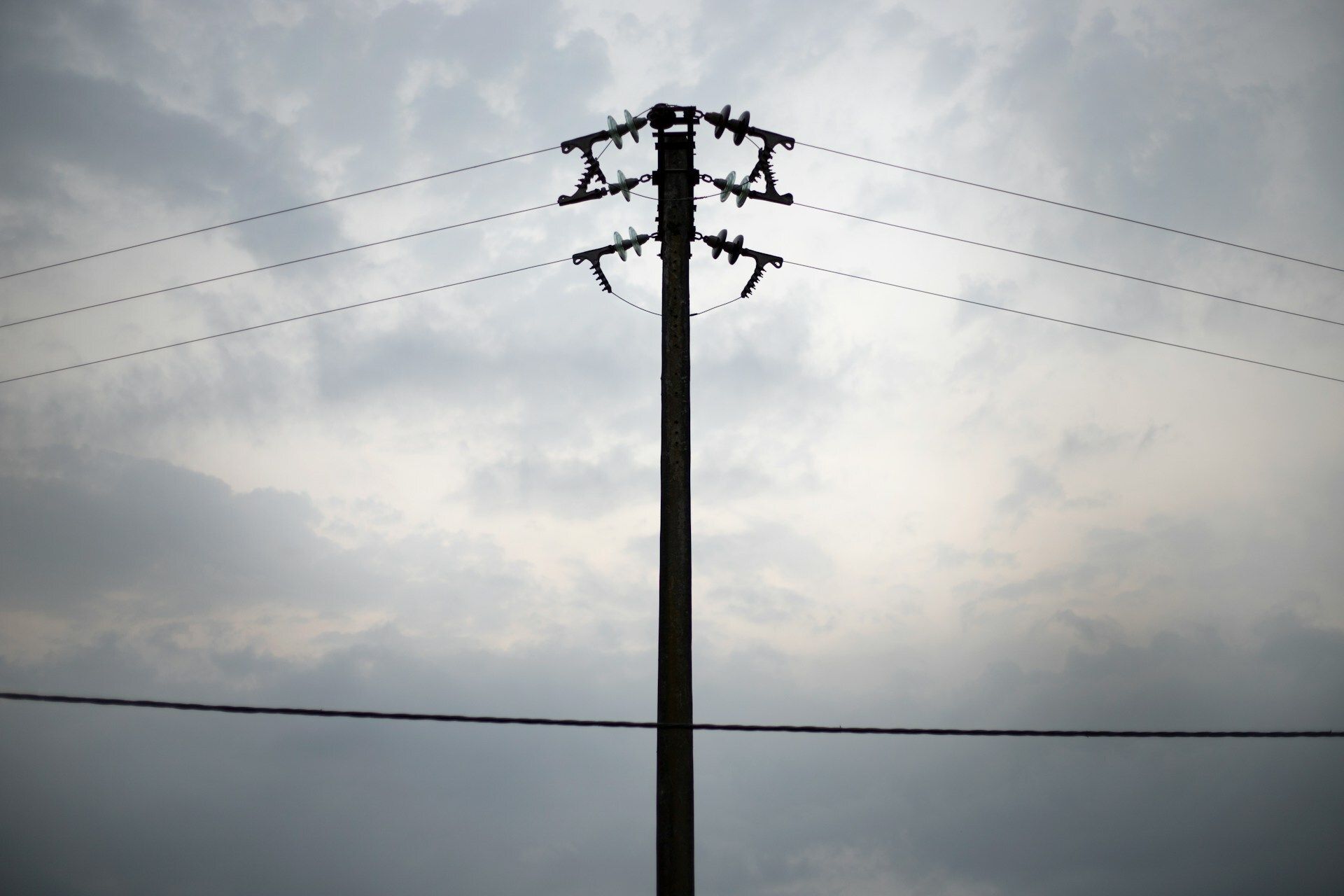Welcome to another edition of Climatebase Weekly. In today’s edition…
🌎 The Undercurrent: Why Electricity Costs Are Soaring — and Who’s Really Paying the Price
In today’s edition of The Undercurrent, we examine the quiet crisis unfolding behind America’s soaring electricity bills — from the strain of an aging grid and surging AI power demand to the uneven patchwork of utility regulation that decides who pays, who profits, and who’s left in the dark.
🌟 Featured climate jobs at 10+ new employers — Scroll down to view them all!
Don't see any that are a good fit for you? Head over to Climatebase to browse over 3k+ new jobs that have been posted in the last 24 hours.
⚡️ Inside the Climatebase Fellowship — Energy & Transportation week
In the last two weeks, Climatebase Fellows dove into sector deep dives on Energy and Transportation, featuring expert speakers leading breakthroughs in distributed energy, just transitions, and decarbonizing hard-to-abate sectors. Scroll down to see the highlights from Cohort 8’s latest sessions.
Quick reminders:
Employers: Are you hiring? Post your jobs and we'll share them with our 120K+ newsletter subscribers
Follow Climatebase on LinkedIn.
This Week in the Fellowship Community
⚡ Energy & Transportation Take Center Stage
The first sector deep dives of the current Climatebase Fellowship cohort focused on Energy and Transportation, bringing together leading voices driving innovation, equity, and impact across the climate sector.
Highlights from the Deep Dives:
Fellows explored everything from distributed energy systems and just transitions to shipboard carbon capture and climate entrepreneurship.
Featured Speakers and Topics Included:
Nathaniel Burola (AI & Environment Research Consultant) — on balancing AI’s potential to optimize renewables with its environmental trade-offs.
Katherine Markova (Partnerships, Climate Interactive) — on using the EN-ROADS simulator to model policy impacts and guide system-level energy transitions.
SatKartar Khalsa (Transportation, Climate Imperative Foundation) — on electrifying transport and the power of human-centered storytelling for impact.
Katie Thompson (Cohort 6 Fellow & Founder, Bumprints) — on the race to decarbonize aviation through sustainable fuels and behavioral change.
Additional Speakers Included:
Brian Korgaonkar, Chief Product Officer, Solfácil
Zygmunt Strawczynski, Director, International Business Development, EnergyHub
Alisha Fredriksson, Co-Founder & CEO, Seabound
Emily Moini, Product Manager, Nira Energy
Plus, many more.
Fellows also began pitching their Capstone and startup projects, recruiting teammates, and refining ideas to accelerate real climate solutions.
Huge thanks to our speakers, instructors, and Fellows for making Energy and Transportation Weeks such an energizing start to Cohort 8.
👉 Read the full recap and see all featured speakers here.
What to join the Climatebase Fellowship? Learn how you can be part of this community here.
The Undercurrent
The Climate Fight is Going Private
Across the United States, the rapidly increasing price of electricity is starting to hit household budgets hard. In the last few months, U.S. ratepayers have been surprised by their electricity bills climbing more than twice as fast as inflation.
While the topic has generated plenty of headlines and, naturally, and a fair share of political spin, the reality is far more complex. Understanding why the cost of electricity has become so outrageous in recent months requires an understanding of fuel markets, grid infrastructure, demand growth, policy and regulation, and regional idiosyncracies–and more and more people are educating themselves and others about these subtle but important factors. Here’s what you need to know.
An Aging Grid
First and foremost, the nation’s transmission and distribution system —the actual poles and wires that keep the lights on for millions across the nation —is under a growing strain from aging infrastructure, extreme weather (made worse by climate change), and the urgent need to modernize, especially as AI demands more and more power.
A recent Lawrence Berkeley National Lab study found a strong correlation between rising grid spending and higher electric rates, with “distribution-related capital expenses” up 50 percent between 2019 and 2023. The biggest drivers of these increases are last-mile costs. In states hit by wildfires and storms, the increase is even steeper. In California, wildfire-related grid repairs alone have added about four cents per kilowatt-hour, raising average bills by roughly $30 a month. Add in inflation and supply chain pressures, resulting from everything from tariffs on steel and copper to transformer shortages, and the financial impact is higher. As Inside Climate News points out, because transmission and distribution costs are largely fixed, when electricity use stagnates, those costs get spread across fewer kilowatt-hours, making each upgrade more expensive.
Regional Matters
Regionality plays a significant role in rising electricity prices. The grid that stretches across the US goes through a variety of locales that rely on different types of energy generation. In New England, prices are particularly volatile because most of the power there is generated by natural gas. Pipeline capacity in places like Maine sometimes forces generators to import more LNG, which drives up costs that are passed on to customers.
The US currently exports large amounts of natural gas, and it’s important to understand that electricity markets use what’s known as a marginal-cost model. This model uses the last or most expensive generation unit to set the price in the wholesale markets. If that unit is gas and gas costs rise, then the price paid by everyone climbs higher.
Demand growth also plays a significant role. The Lawrence Berkeley National Lab’s analysis found that states with rising electricity sales saw smaller rate hikes because fixed costs were spread over more customers. As people move from state to state and power generator to power generator, demand growth changes in various regions. In states with an increase in electricity sales (the number of households needing power), the price shocks have been spread over more customers, reducing their size. In places like Maine, where electricity usage has remained pretty flat between 2014 and 2024 (according to that study), prices have jumped 55 percent, the third highest in the country.
On Regulatory Frameworks
These regional disparities are further compounded by the patchwork nature of how utilities are regulated and who controls them. There’s a growing divide between publicly owned and privatized utilities across the country, and that’s reshaping how these rate hikes are playing out. In some regions, publicly owned or cooperative utilities (which are not beholden to shareholders) can reinvest earnings into much-needed grid maintenance and rate stabilization, helping to reduce price shocks for consumers. Regulatory models and utility/commission cost-recovery rules vary by state. Some states allow utilities to recover more quickly, while others impose stricter oversight, meaning price shocks are cushioned or enhanced depending on the location.
Additionally, some power providers are privatized and operate for profit, like those in Texas for example. As we noted in a recent newsletter, the local power provider, Griddy, raised wholesale energy prices to as high as $9000 per MW hour during the February 2021 blackout and freeze, and consumers saw energy bills as high as $5700. Griddy had to settle with consumers and file for bankruptcy as a result.
Unfortunately, this means the U.S. is not a uniform market, leading to permitting and regulatory delays for new transmission lines that cross the country. This can add significant costs. The U.S. has dramatically slowed the build-out of high-voltage transmission lines — from about 2,000 miles per year in 2012-16 to just 55 miles in 2023 — largely because of permitting bottlenecks, regulatory delays, and rising materials costs. These delays are adding upward pressure on electricity bills, as aging infrastructure and postponed expansion raise the cost of delivering power even if (and when) the generation itself is cheaper.
The AI and Data Center Demand
The rapid expansion of AI and data centers is also contributing to rising electricity costs across the U.S. and globally. These facilities require enormous and continuous power to train and run large AI models, and their growth has pushed national electricity demand sharply upward.
The Department of Energy estimates that U.S. data centers consumed about 4.4 percent of all electricity in 2023 and could account for as much as 12 percent by 2028. Meeting that demand will force utilities to invest billions in new generation, transmission, and distribution infrastructure — costs that ultimately get passed to ratepayers.
In regions with dense clusters of AI or cloud facilities, like the Mid-Atlantic, for example, local grids are straining under sudden spikes in demand, driving higher rates for households and small businesses.
Analysts at Bain & Company and the Union of Concerned Scientists warn that these “speculative loads” — power commitments utilities must build for even before the data centers come online — are already adding billions in costs to regional grids. In short, the AI boom’s insatiable appetite for electricity is reshaping power markets and also contributing to the steady rise in electric bills nationwide.
The Bottom Line on Why Electricity Costs Have Gone Up
At the heart of debates over why power bills are going up lies a deeper inquiry about fairness and accountability: If utilities exist to serve the public interest, why are ordinary ratepayers being asked to shoulder nearly all the costs of modernization, resilience, and expansion—while those same utilities continue to post healthy profits and reward shareholders?
After all, the grid is, by definition, a public good; it connects every home, business, and school in the country. Yet as electricity becomes both more essential and more expensive, the burden of paying for its future has fallen hardest on those least able to afford it. Perhaps the real reckoning ahead isn’t only about how we generate or transmit power—but about who pays, who profits, and who the system is designed to serve.
New Jobs & Employers
Check out some of the latest featured jobs below. If you don't see anything that speaks to you, you can always go to Climatebase to explore over 50,000 new climate jobs.
“Climate-Resilient Water for Texas”
Senior Project Manager (In-person · Texas, US)
“Eden pioneers electric reservoir stimulation, a precise, sustainable alternative to fracking that unlocks energy and mineral resources for a carbon-neutral future.”
Senior Mechanical Engineer / Mechanical Engineering Lead (In-person · Somerville...)
Senior Pulsed Power Engineer / Senior Pulsed Power Engineering Lead (In-person · Somerville...)
Reservoir Modeler/Engineer (In-person · Somerville...)
Electrical Engineering Technician (In-person · Somerville...)
“"Innovative solar distribution driving renewable energy adoption nationwide."”
Management Training Program (In-person · Raleigh, N...)
SE 2026 Summer Internship (In-person · Raleigh, N...)
Management Trainee (multiple locations)
“Our unique technology efficiently extracts premium carbon from low-value natural waste, turning it into a powerhouse for carbon-neutral products or securing it underground”
Controls/Electrical Engineer – Process Automation and IOT (In-person · Minneapoli...)
Finance and Business Operations Manager (Remote)
“Rappel delivers asset-specific corporate decarbonization solutions by combining a streamlined engagement process with advanced carbon and financial modeling software.”
Senior Software Engineer / Engineering Lead (Hybrid · Oakland, CA, ...)
Full-Stack Software Engineer (II) (Hybrid · Oakland, CA, ...)
Decarbonization Delivery Analyst (Hybrid · Los Angeles, ...)
“Scalable carbon removal and water production to decarbonize globally and conserve resources.”
Technical Program Manager (Hardware) (Hybrid · Foster City, ...)
Senior Product Engineer (Hardware) (In-person · Los Angele...)
Join Our Talent Network (Hybrid · Bridgewater T...)
“Inspiring lifelong ecological commitment through immersive education and land restoration since 1968.”
Educator (Remote · Aspen, CO, US)
Vegetable Production Manager (In-person · Basalt, CO...)
“Energy modeling platform”
General Application (Hybrid · Remote · Los ...)
“Accelerating commercial EV adoption with integrated software for vehicles, chargers, and utilities.”
Customer Support Manager (Remote · Brooklyn, NY,...)
“Accelerating renewable energy investment to reduce fossil fuel reliance.”
General Application (Remote · Seattle, WA, US)
“Market-based conservation driving economic growth and massive CO2 reduction for local communities.”
Consultoría en Procesos Contables, Financieros y Admin - Mitú Colombia (In-person · Mitú, Vaup...)







